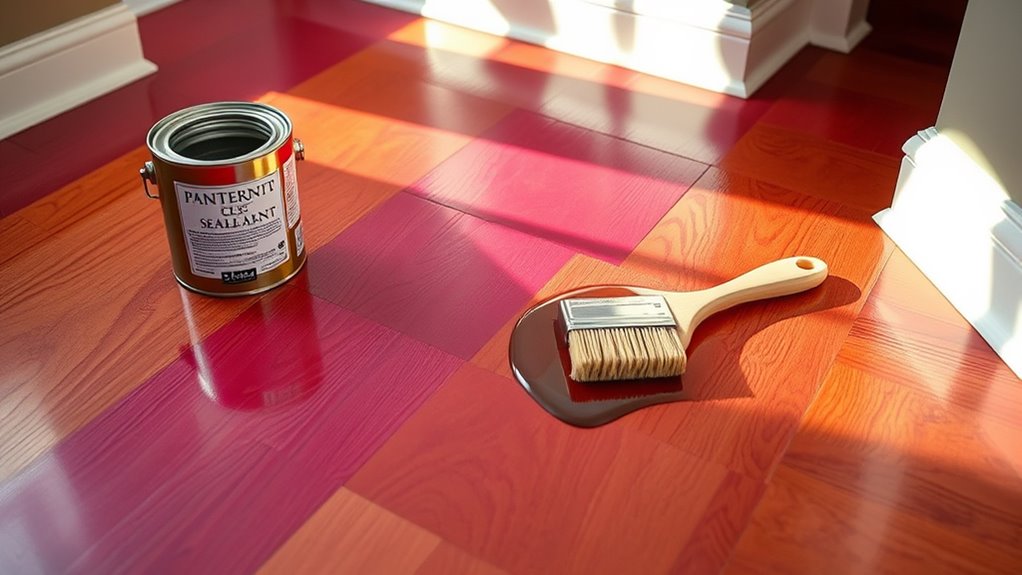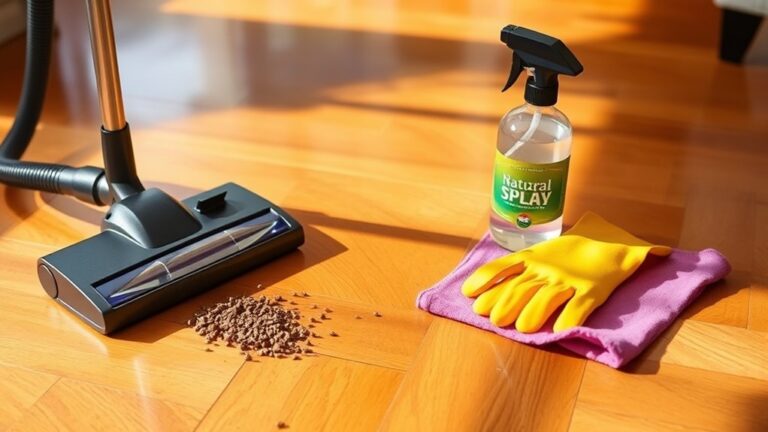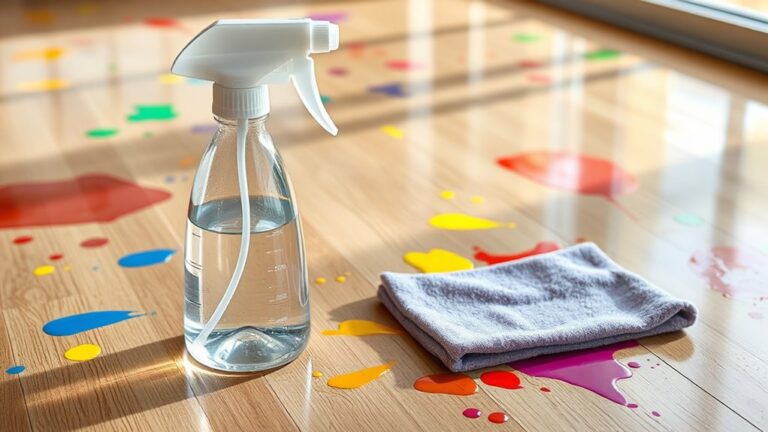To paint wood floors in three simple steps, start by thoroughly cleaning and prepping the surface—remove furniture, sweep, mop, and sand to guarantee smoothness and paint adhesion. Next, apply a quality primer evenly and let it dry, then paint with durable floor paint using steady strokes for an even finish. Finally, seal the paint with a protective coat like polyurethane to enhance durability. Follow these basics, and you’ll soon see how to achieve a lasting, beautiful pavimento transformation.
Prepare and Clean the Wood Floors

Before you begin painting, you’ll need to thoroughly prepare and clean the wood floors to guarantee the paint adheres properly and lasts. Start by removing all furniture and debris. Use a broom or vacuum to clear dust, then employ a damp mop with a mild detergent solution to eliminate grime. Focus on stubborn stains with a scrub brush, applying targeted cleaning techniques like spot-cleaning with vinegar or trisodium phosphate. After cleaning, allow the floor to dry completely. Next, use preparation tools such as a floor sander or sanding block to smooth the surface and remove any existing finish. This step assures better paint adhesion. Finally, vacuum and wipe away all sanding dust with a tack cloth. Proper preparation sets the foundation for a durable, beautiful painted floor that gives you the freedom to express your style.
Apply Primer and Paint
Start by choosing a high-quality primer designed for wood surfaces to guarantee strong adhesion and longevity. Your paint selection should complement the primer and be durable enough for foot traffic. Use application techniques that assure even coverage and minimal brush marks.
Follow these steps for a flawless finish:
- Stir the primer thoroughly to mix any settled components.
- Apply the primer in thin, consistent coats with a high-quality brush or roller.
- Once dry, lightly sand the surface to smooth out imperfections.
- Apply your chosen paint using long, steady strokes, maintaining a wet edge to avoid lap marks.
Seal and Protect the Painted Surface

Although the paint may look perfect once dry, sealing the surface is crucial to protect it from wear and tear, moisture, and stains. Start by selecting the right sealant options—polyurethane, water-based, or oil-based—each offering different levels of surface durability. Water-based sealants dry faster and have low odor, while oil-based ones provide a tougher finish but take longer to cure. Apply the sealant evenly with a high-quality brush or roller, moving along the wood grain to avoid bubbles and streaks. Allow the first coat to dry completely before lightly sanding to guarantee adhesion. Apply at least two coats, depending on foot traffic intensity. Proper sealing locks in your paint’s beauty and grants your floor the freedom to withstand daily use without damage.




